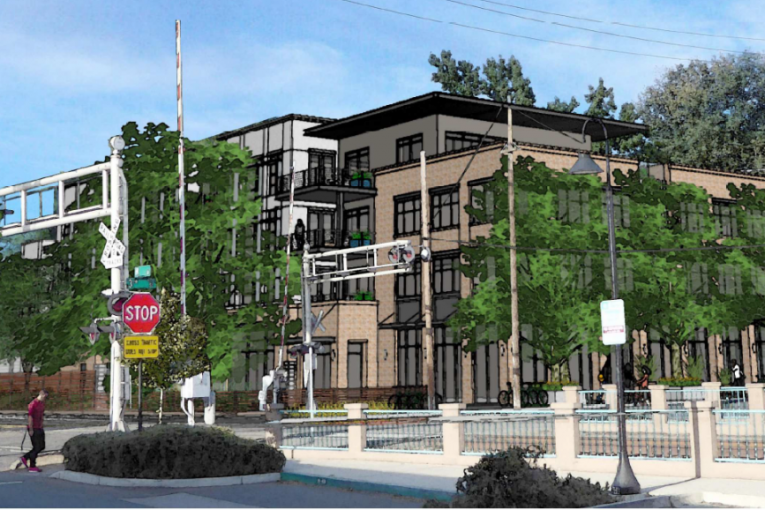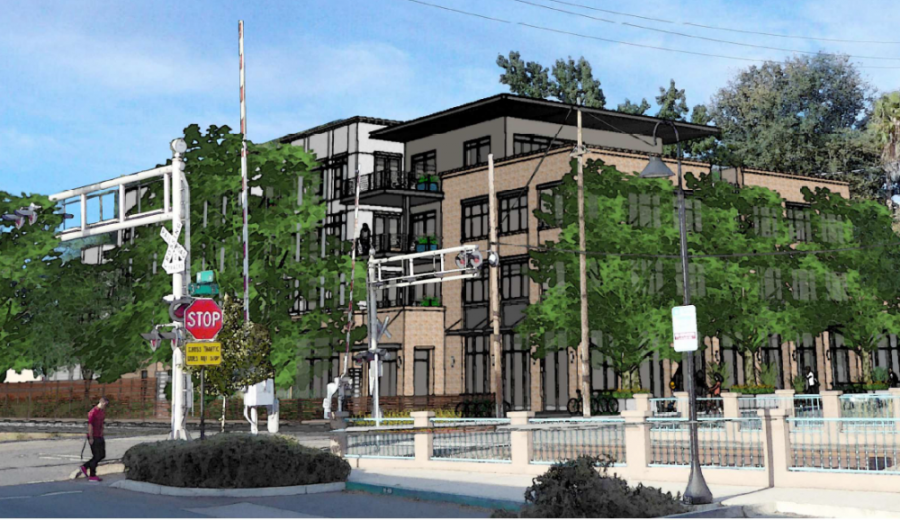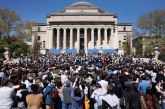

It was a tale of two tentative rulings – a few weeks apart a judge ruled for the city on Lincoln40, while a separate judge ruled against the city on Trackside. It goes to show you how important the judge can be in structuring hearings, as the hearings themselves couldn’t have been more different.
A few weeks ago, for Lincoln40 where Judge Stephen Mock had ruled previously for the city, Judge Mock had both sides present about 75 minutes of oral argument and rarely interrupted.
This week, Judge Samuel McAdam didn’t ask the attorneys to give any formal statements or even re-argue the core of the case.
Instead, he spent nearly 90 minutes asking questions, and at times it appeared that he volunteered his own opinion and even tipped his hand – but then invited both sides to have their say in convincing him otherwise.
If you read between the lines on the judge’s comments, perhaps you believe there is a possibility that he could change his ruling. But it’s hard to know whether that is where he will come down on things, once he pulls back open the code sections and considers the arguments made by both sides in the context of those.
While Judge McAdam was correct in noting that the burden to overturn a city council decision was necessarily very high, the burden to overturn the judge’s tentative ruling might be even higher at this  point. Still, while I do not believe there is much chance of that happening in Lincoln40, the judge seemed at least a little more open to reconsideration in Trackside.
point. Still, while I do not believe there is much chance of that happening in Lincoln40, the judge seemed at least a little more open to reconsideration in Trackside.
In the tentative ruling, he analyzed Trackside in the context of the rest of the buildings in the downtown core area. He not only decided that Trackside was not consistent with the notion of a transition area, it was actually far larger in size and mass than anything else in the core area. Based on that, he decided that the city abused their discretion when they approved the project.
On Monday, however, the city was able to change the focus of the judge’s analysis.
The argument put forward by the city was (A) this wasn’t just a transition zone, but it was an opportunity site where housing for mixed use is encouraged at 40 units per acre; (B) the transition is occurring through step backs and set backs; and (C) the reason the size and mass and scale are so big on Trackside is due to the size of the lot but if you look at FAR (floor area ratio) rather than stories, the city is in compliance.
Judge McAdam acknowledged that, in his ruling, he did not “process” the importance of this issue.
That seems like a big admission by the judge. And if I’m the neighbors, I would be fairly nervous, because he basically shot down the other arguments by Don Mooney – including perhaps most notably the core contention by the neighbors throughout their dissent of the project..
For example, Don Mooney raised the issue that the leased land was important to this equation.
“The Floor Area Ratio will increase (dramatically) if that leased land is removed,” he said. “It can be revoked (with notice).”
But Judge McAdam pushed back, saying “nothing in the record indicates that that lease is going to be rescinded. It’s speculation. The court’s not in the speculation business.”
The judge asked whether there was any rule that would require the city to break up the building. He asked whether that was required by the planning documents.
“They still don’t… get that fourth story,” Mr. Mooney said. “That fourth story takes it out of the scope of those planning documents.”
Judge McAdam responded, “There are four-story buildings nearby,” and he said, “I’m not sure going to the fourth story was dispositive. It’s one factor to consider among many.”
Don Mooney responded that the planning documents “talk about breaking up the perceived mass of the building by dividing the building into modules or into separate structures that are similar to buildings that are seen traditionally in the neighborhood.” He added that “separate buildings is encouraged.”
That may be a point in the favor of the plaintiffs here, but Judge McAdam did not seem to think so.
Moreover, he shot down one of the key points that the neighbors have raised throughout this process.
Don Mooney said the Davis Municipal Code indicates “the stricter shall apply.” He said if the building is not consistent with the guidelines then the design guidelines become the more controlling over FAR.
He said “even if the FAR is consistent with zoning, the project’s not consistent with the design guidelines.”
The city countered the argument by noting that they do not believe that the design guidelines trump zoning in this case.
Judge McAdam agreed. He said, “I tend to agree.” He said “it’s highly relevant and it shouldn’t be ignored.” But added, “I don’t believe a single issue is dispositive.”
This was the key dividing line. The neighbors in the fall of 2017 argued, “This building would be the largest mixed-use building in Davis, setting a precedent for future growth and it does not conform to any zoning or planning documents.”
In the Davis Downtown and Traditional Residential Neighborhoods Design Guidelines, it says, “If there are inconsistencies between these guidelines and zoning standards, the more restrictive applies.”
But in the Trackside staff report they noted that “the guidelines are not strict standards and do not require 100% compliance and there may be disagreement about the interpretation of guidelines, but it is ultimately the Council’s role to review the project under the guidelines, and determine whether the project is consistent with the design guidelines as a whole.”
Here not only did the judge tip off the parties that, while he believes this to be a relevant issue, he is not necessarily believing that it will trump other factors – and by giving the judge the FAR issue to consider, the city has redirected his gaze from a simple calculation of size and mass to something more complicated.
Given the judge’s stated charge that the city must act unreasonably for the plaintiffs to prevail, the question is whether the city and the city council were unreasonable to propose a large building but on a large lot in this location.
We are thus back to the judge’s original ruling. The question for perhaps as soon as the next ten days (if you look at the March 25 date as the critical one) is whether the city gave the judge enough factual policy to enable him to overrule his original tentative ruling.
It still seems like a long shot that the judge would overturn his ruling, but it seems he may actually be open to doing so, having acknowledged that he had not considered the issue of FAR.
—David M. Greenwald reporting






